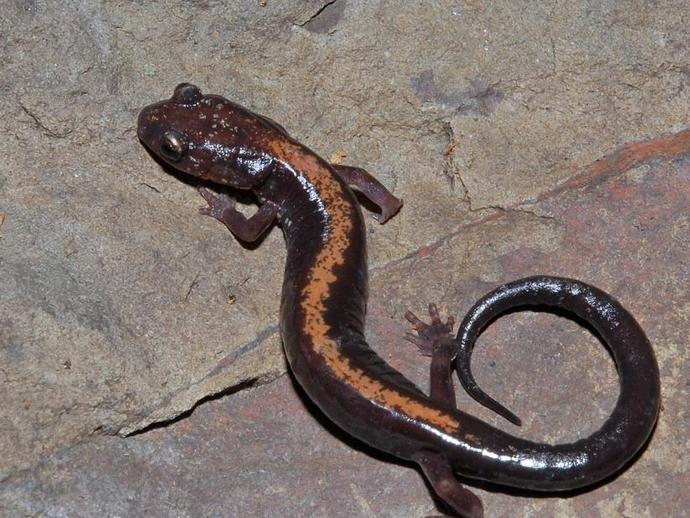January 20, 2021
Ben here with the Wednesday edition of #BenInNature presented by our friends at Carter Bank & Trust!
Here's our choice for the third rarest salamander in Virginia: Plethodon shenandoah, the Shenandoah salamander!
This small salamander is known from just three isolated areas on three mountains in northern Virginia's Shenandoah National Park: Hawksbill, Stony Man, and The Pinnacles. On those three mountains, it can only be found on their north-facing talus slopes (a talus slope is formed by an accumulation of rock debris).
What makes this particularly remarkable is that talus slopes are usually pretty dry, and salamanders need plenty of moisture. As a result, you'll only find these salamanders in scattered, moist microhabitats within the talus slopes!
So why does this salamander live in such an odd place? The answer is the red-backed salamander (Plethodon cinereus). Red-backed salamanders are common in Virginia and they live in the more heavily-forested areas of Shenandoah National Park. They're also aggressive and territorial, and they have pushed the Shenandoah salamanders out of the forest and onto the talus slopes. Fortunately, Shenandoah salamanders have a slightly higher tolerance for dry conditions than red-backed salamanders do, so they're safe on the talus slopes ... for now.
Unfortunately, erosion is a constant issue on the talus slopes, and the weathering of the slopes will eventually lead to soil formation, which will lead to an increase in moisture, which will lead to the talus slopes becoming a pretty great place for red-backed salamanders to live. Once that happens, the Shenandoah salamander's future starts to look a little unclear.
Fortunately, it'll be a long time before that becomes a major issue. In the meantime, the Shenandoah salamander has certainly carved out a fascinating niche for itself!
Thank you to the Virginia Herpetological Society (www.virginiaherpetologicalsociety.com) for the use of this photo, which was taken by John White.
ABOUT #BenInNature
Social distancing can be difficult, but it presents a great opportunity to become reacquainted with nature. In this series of posts, Administrator of Science Ben Williams ventures outdoors to record a snapshot of the unique sights that can be found in the natural world. New updates are posted Monday - Friday, with previous posts highlighted on the weekends. This series of posts is made possible thanks to the support of VMNH Corporate Partner Carter Bank & Trust (www.cbtcares.com).
NATURE PHOTO IDENTIFICATIONS
If you discover something in nature that you would like help identifying, be sure to message us right here on Facebook with a picture (please include location and date of picture) and we'll have our experts help you identify it!

 Hours & Admissions
Hours & Admissions Directions
Directions

